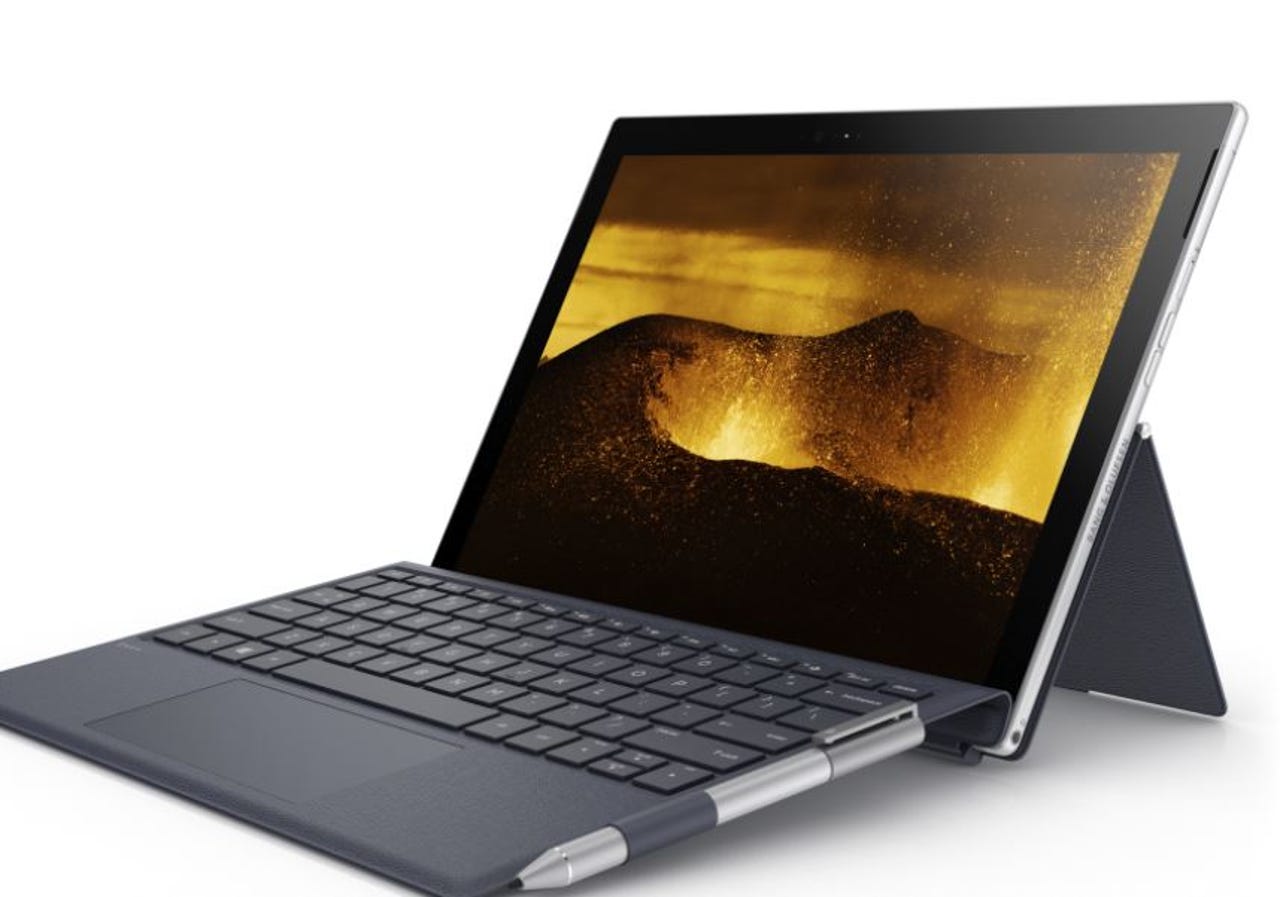Microsoft debuts Windows 10 on ARM


Windows PCs with multi-day battery life soon may no longer be just a pipe dream.
See also
A year ago, Microsoft announced it was working with its PC partners to bring Windows 10 to Qualcomm's ARM processors. The resulting machines, part of the "Always Connected PC" ecosystem, would start rolling out before the end of calendar 2017, officials said.
Today, Dec. 5, Microsoft provided a progress report on Windows on ARM at Qualcomm's Snapdragon Tech Summit. Microsoft and PC makers Asus and HP showed off new PCs running Windows 10 on Snapdragon 835 at the event.
See: Qualcomm announces 'always connected' Windows 10 mobile PCs
Asus' NovoGo will begin shipping at least in quantities before year-end, I've heard. Models with 4GB of RAM and 16GB of storage will be available starting at $599, and 8GB/256GB storage model at $799, Asus officials said today. Asus is claiming 22 hours of continuous video playback and 30 days of standby.
Update: Buried in Qualcomm's press release is the actual release date for Asus' NovoGo: "Early next year." Lenovo execs also said they would discuss their ARM-based PCs at CES in January. This means none of the ARM-based Always Connected PCs will ship in calendar 2017. which was the initial target for their release.
HP's Envy x2 -- like most of the ARM-based Always Connected Windows 10 devices -- won't be available until spring 2018. Users can get up to 20 hours of active use and 700 hours of "Connected Modern Standby." Pricing is not yet available.
Microsoft is providing OEMs with a version of its Windows 10 S operating system that works natively on ARM. It also is providing emulation technology so that Win32 apps to also work on Always Connected devices. The company extended the Windows-on-Windows (WoW) compatibility layer that it currently uses to enable x86 applications to run on x64 to ARM devices.
(What about Intel's thinly veiled threat over patents for Win32 emulation on ARM from earlier this year? Neither Microsoft nor Intel will comment on what has/hasn't happened there.)
HP and Asus will ship their Always Connected devices with Windows 10S preinstalled, but will give users the option of moving to Windows 10 Pro for free for a limited period of time. Microsoft earlier this year extended the free 10 S to Pro upgrade to March 2018. Asus said that it will offer the 10 S to Pro upgrade for free until September 2018. Windows 10 S is a version of Windows 10 that runs Microsoft Store apps only.
While much of the excitement around Always Connected devices centers around their reported battery-life numbers (thanks to the integration of LTE in the ARM chip, making room for bigger batteries inside these PCs), Intel also is part of the Always Connected PC ecosystem. Always Connected is the branding for PCs that include built-in gigabit LTE and Wi-Fi; long battery life (in ARM devices' case, allegedly multiple days without a recharge); run Windows 10; and be thin, light, and fan-less.
Unsurprisingly, Microsoft officials are not positioning these as low-end netbook 2.0 devices or as successors to the short-lived Windows RT ones. Always Connected PCs are for those who want the simplicity and connectivity of a phone, blended with the power of a PC, said Matt Barlow, corporate vice president of Windows Marketing. That means everyone from students, to road warriors, to consumers are potential targets for these devices.
Over time, Microsoft believes Always Connected thin and light devices also could work for enterprise users, as LTE networks could eventually replace pricey, private Wi-i networks with faster and more secure service, Barlow said.
In May this year, Microsoft said that Asus, HP and Lenovo would be among the first OEMs providing ARM-based Always Connected PCs. It also said at that time that AT&T, BT/EE, DTAG/T Mobile, Vodafone, Orange, Tele2, Swisscom, 3, KDDI, Gemalto, Oberthur, Gigsky, and Transatel would be the first mobile operators backing the platform.
The Win32 emulation in these ARM-based devices is meant to win over those who need Win32 apps that may or may not be available in the Store. Microsoft is touting the availability of key, commonly used Win32 apps, especially full Microsoft Office, as working well on these devices. Over time, Microsoft and partners plan to broaden the set of tested Win32 apps that will work well via emulation, officials said.
Previous and related coverage
Windows 10 picked as 'initial' OS for Germany's new government client
Despite EU issues with Microsoft's personal data use, Germany is working on a Windows 10 client for federal staff.
Microsoft's Edge browsing apps generally available for iOS, Android
Microsoft is continuing to bang the Windows 10 'Continue on PC' drum with its Edge browser apps for iOS and Android.